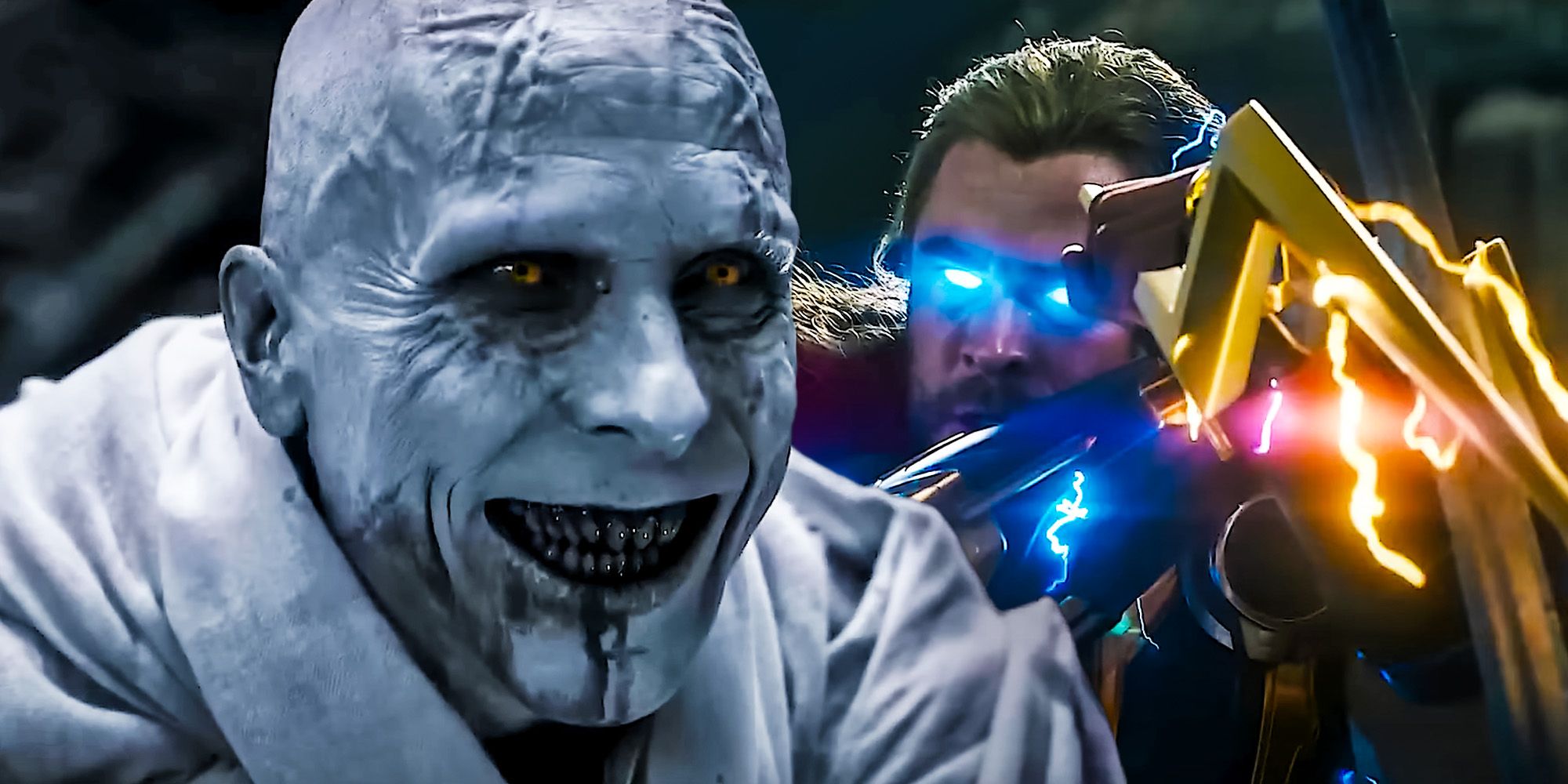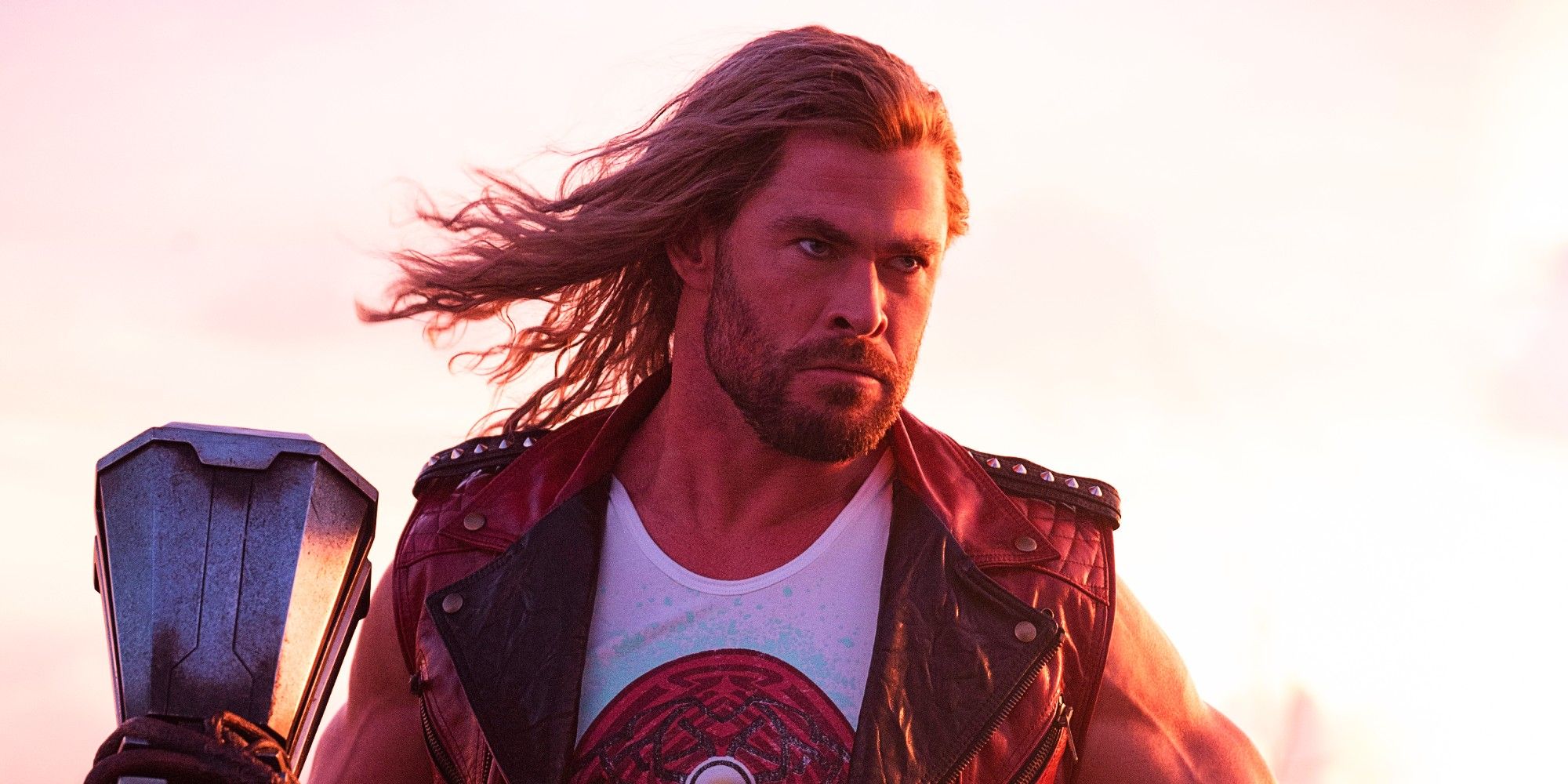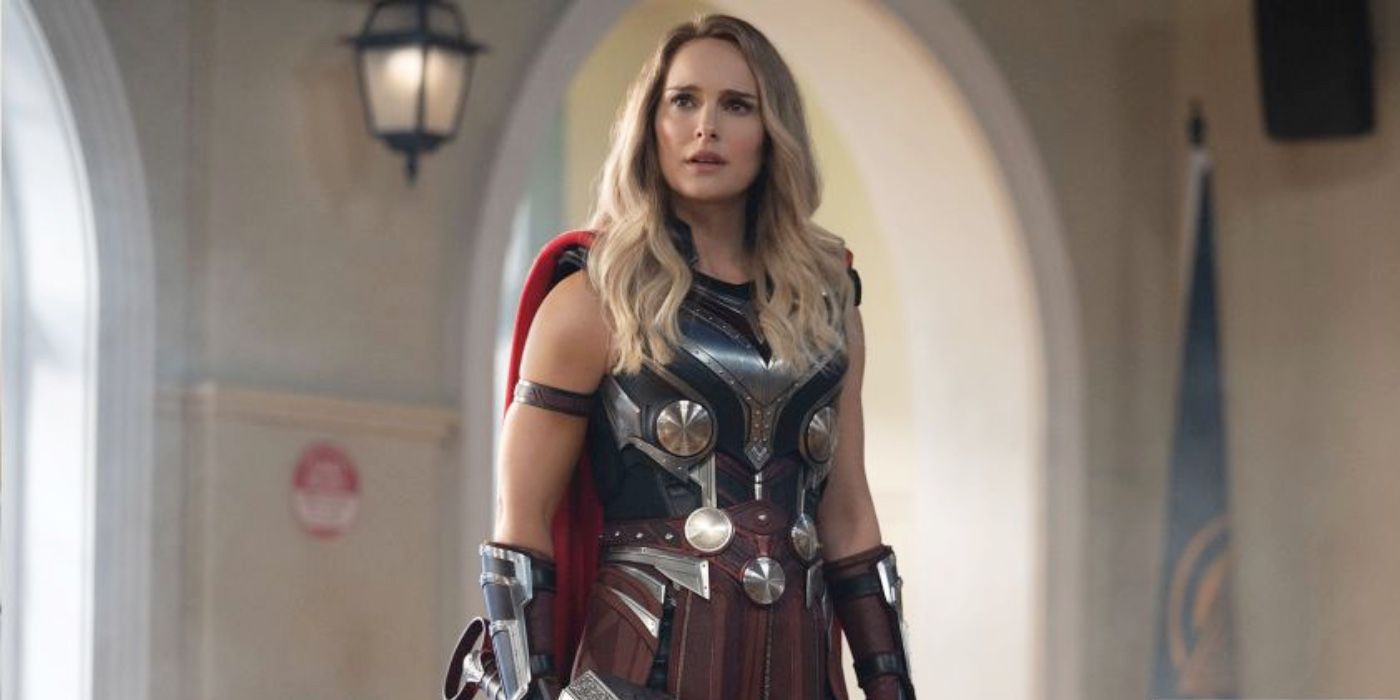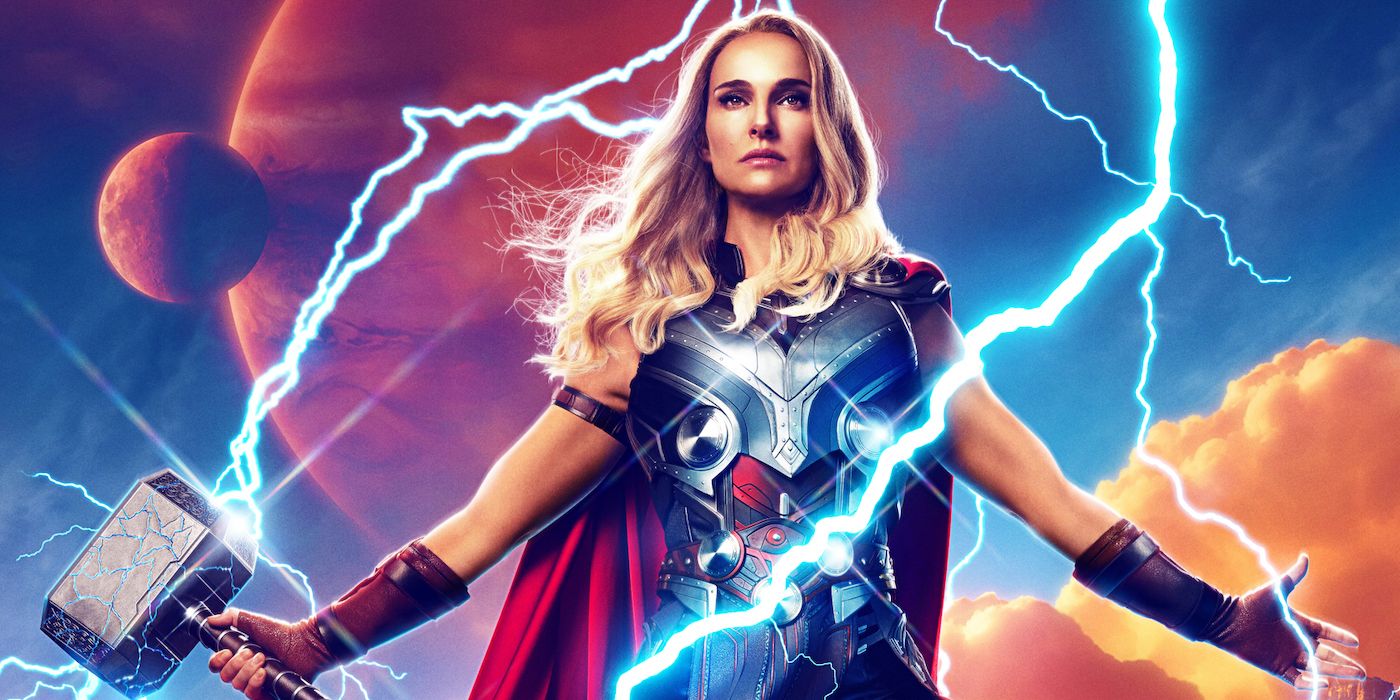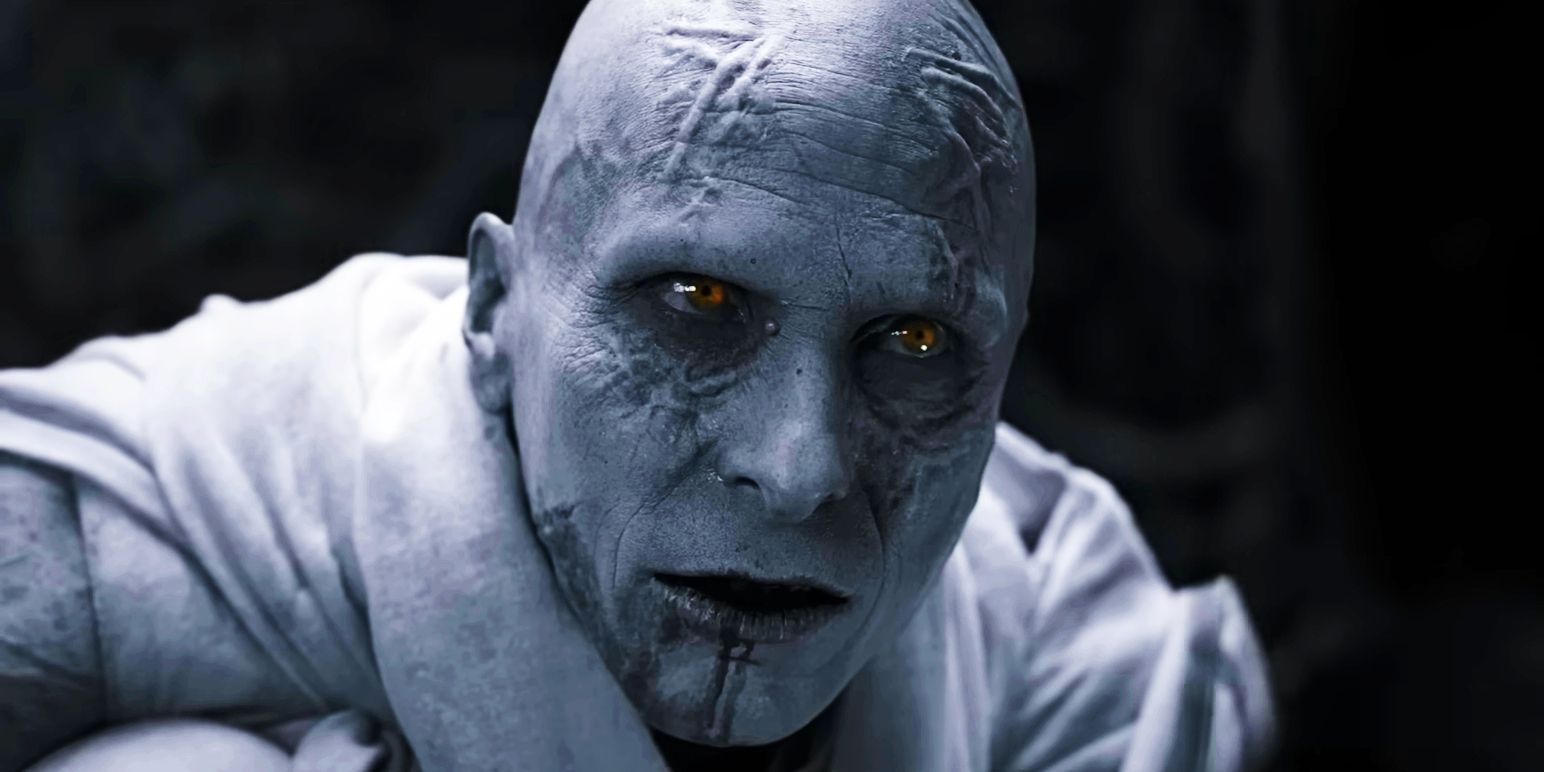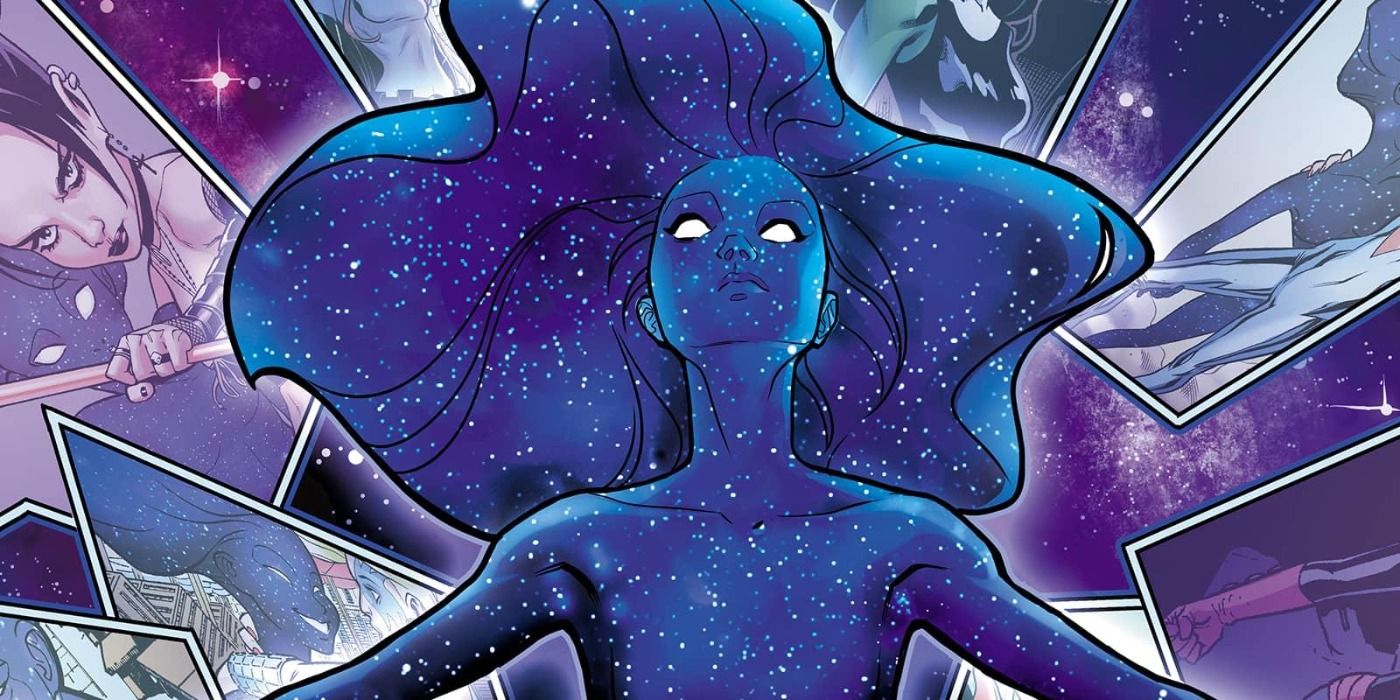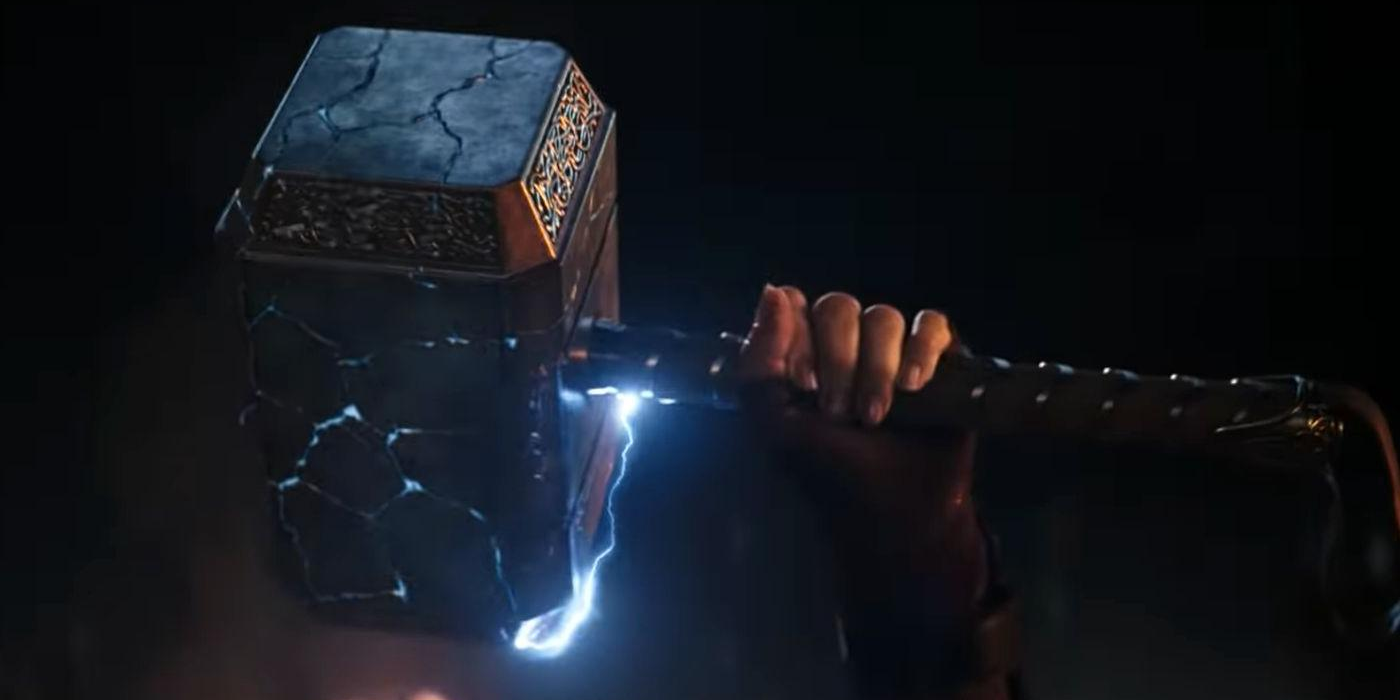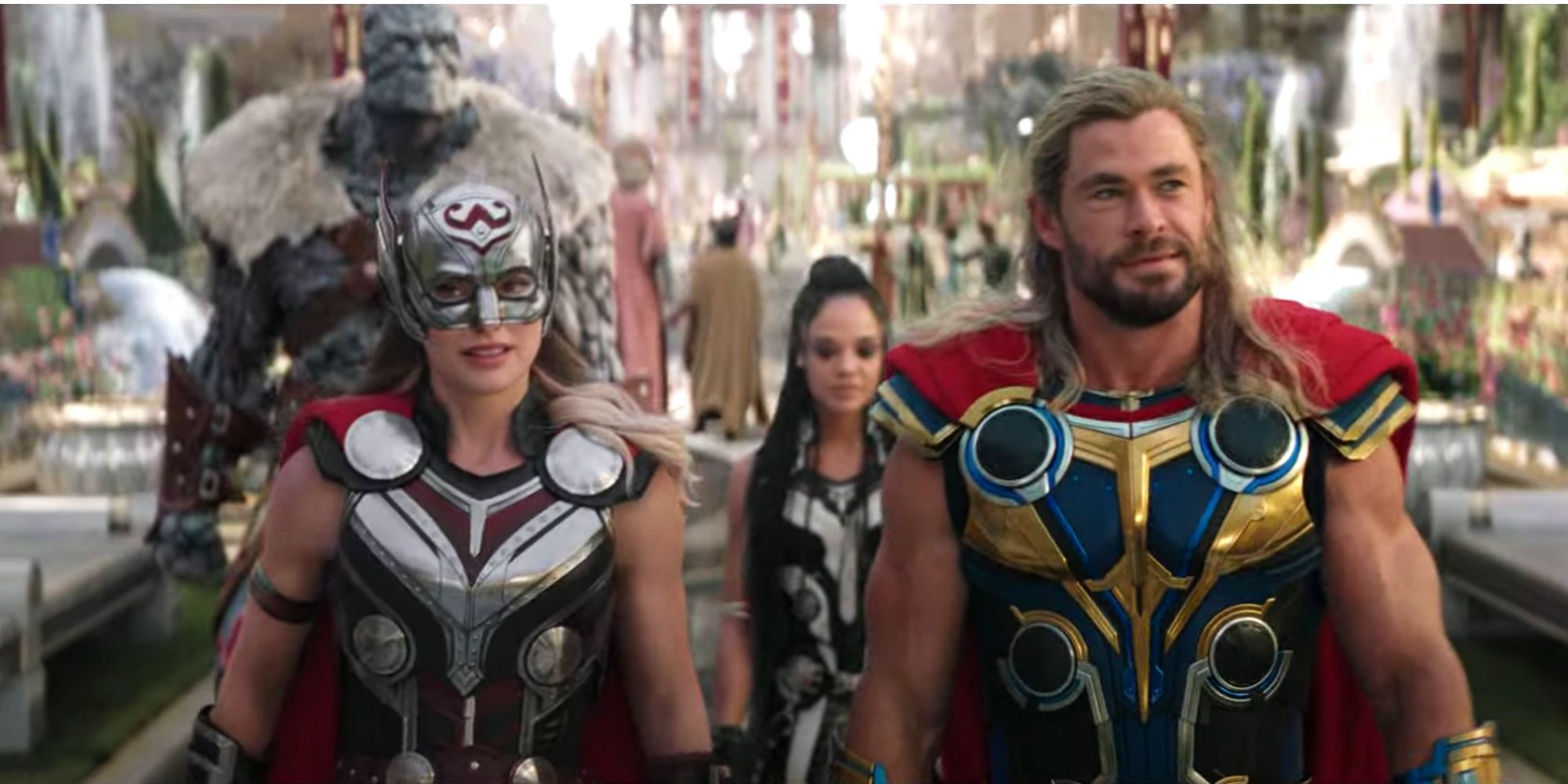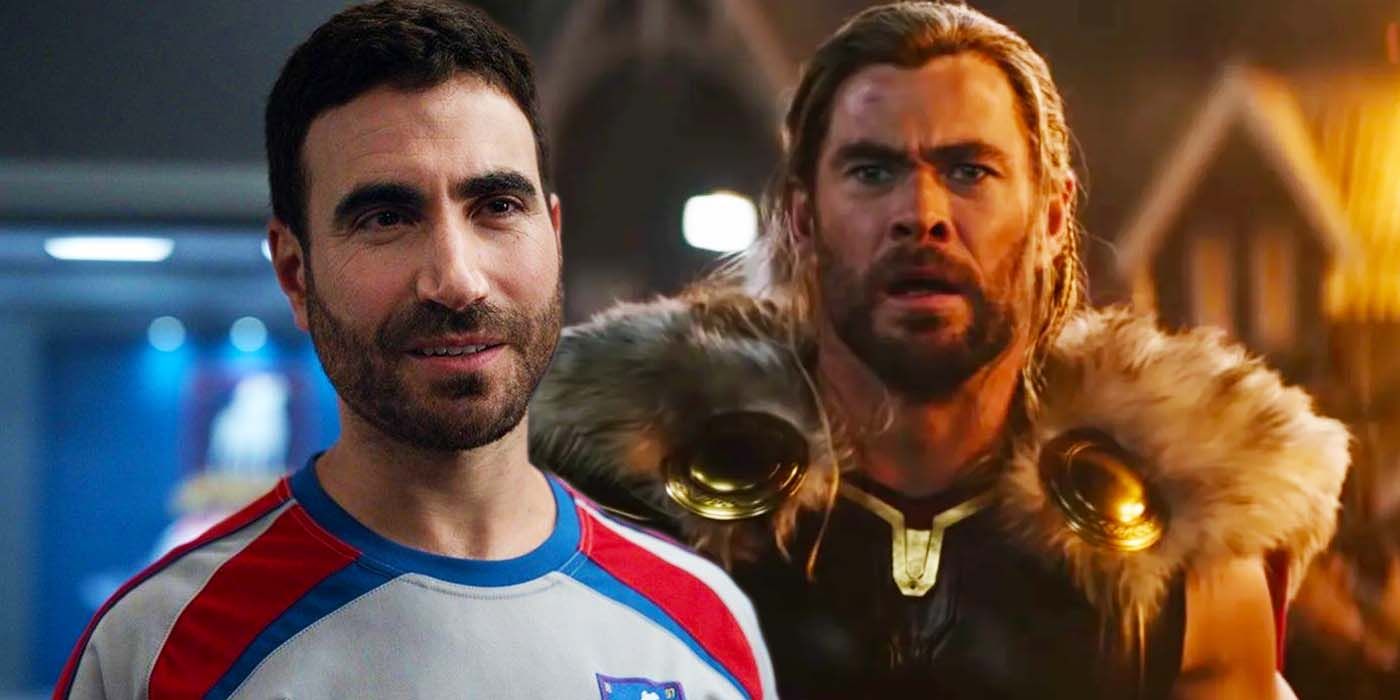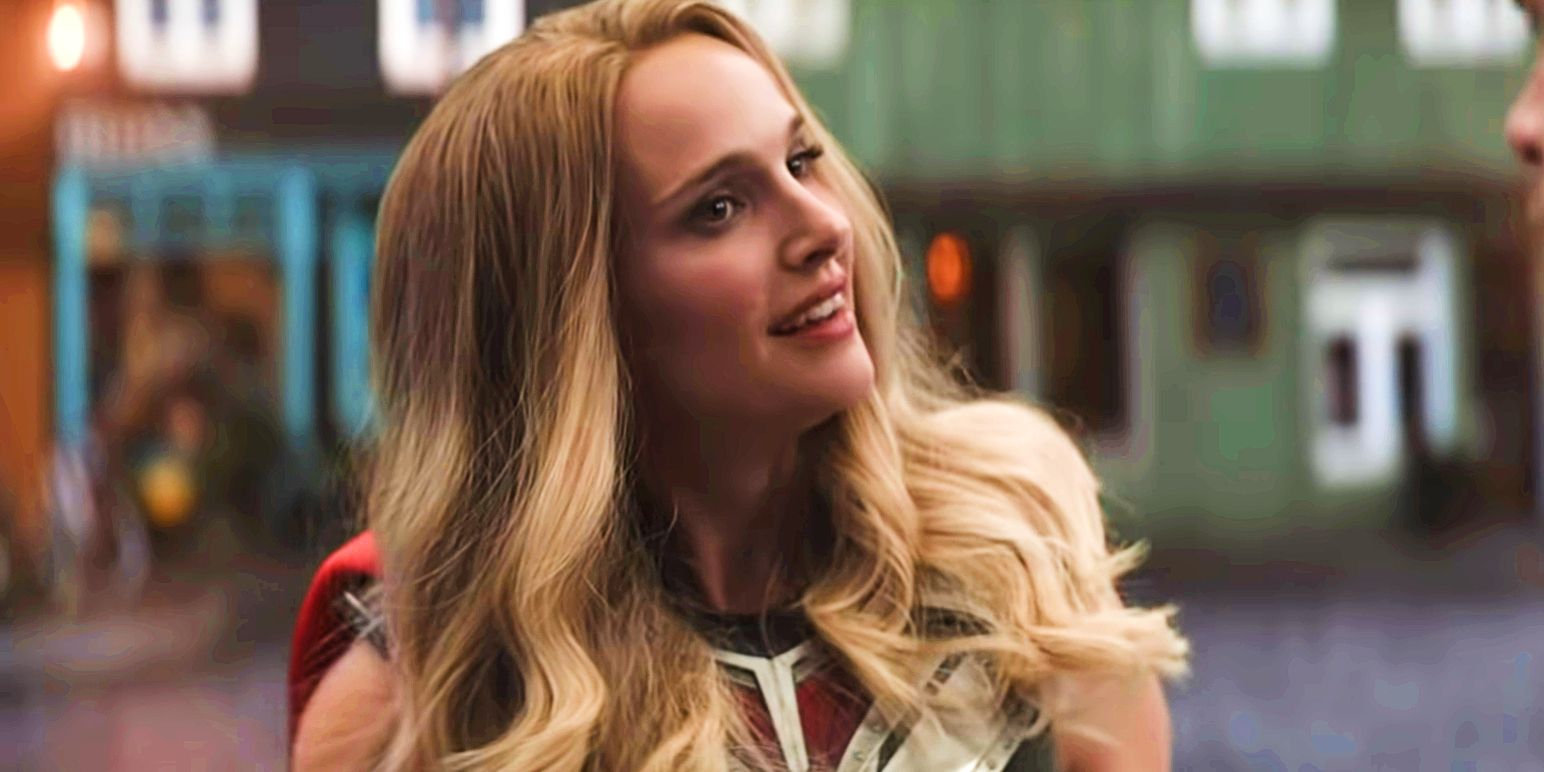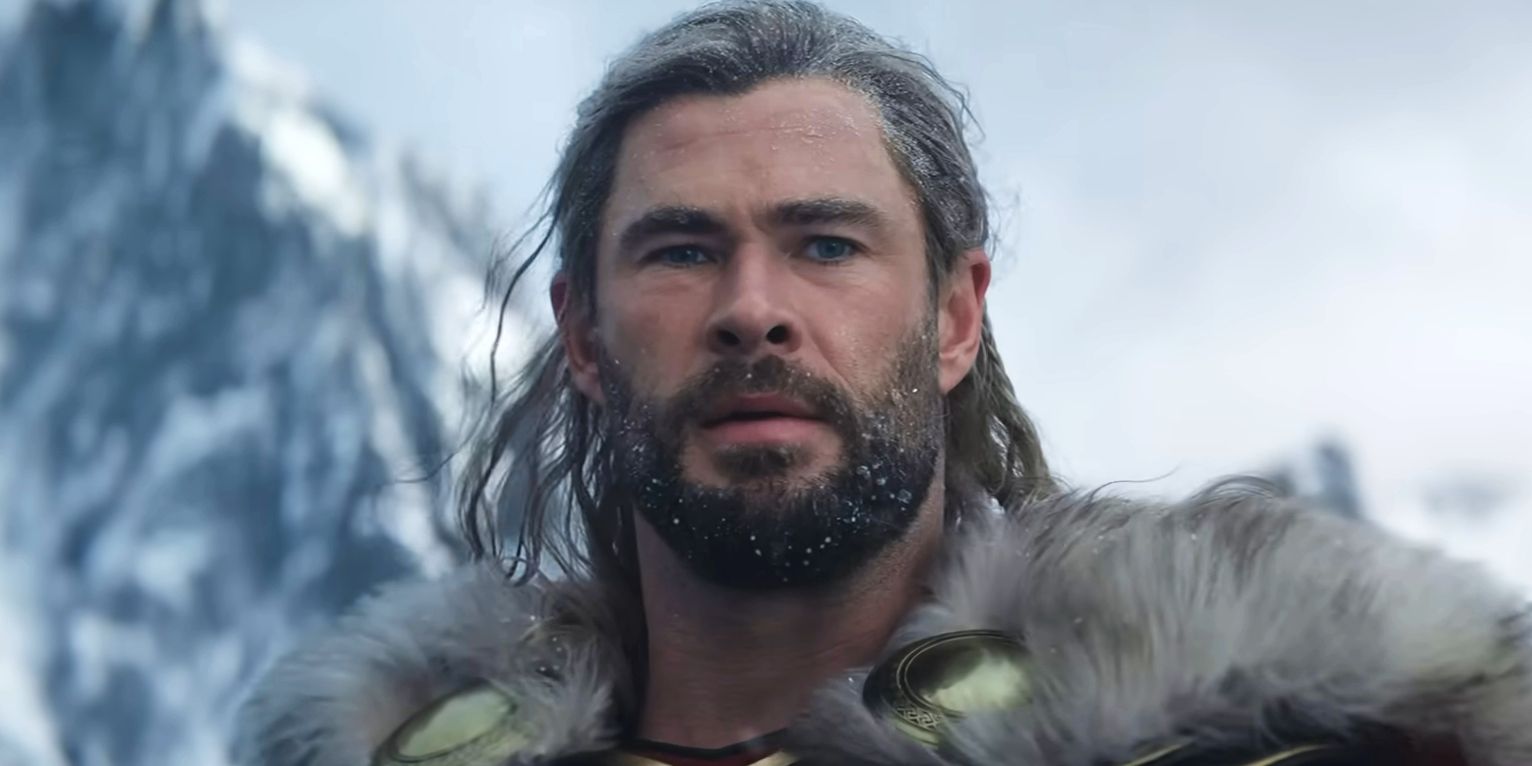Warning: Contains spoilers for Thor: Love and Thunder.
What happens at the end of Thor: Love and Thunder and what does it all mean? Here's Thor: Love and Thunder's ending explained in detail. Thor might be the first MCU hero to get a fourth solo film, but the Thor: Love and Thunder ending leaves plenty to explore with the character in future projects. The wait between 2017’s Thor: Ragnarok and the 2022 release of Thor: Love and Thunder was a long one, but Thor has seen plenty of battle in between. Not only is Thor one of the longest-running original Avengers, he played a major role in both Avengers: Infinity War and Avengers: Endgame.
Thor: Love and Thunder picks up with Thor (Chris Hemsworth) still traveling with the Guardians of the Galaxy after he left with them at the end of Avengers: Endgame. However, learning that Sif (Jaimie Alexander) and the gods are in trouble, Thor returns to New Asgard only to find that Jane Foster (Natalie Portman) has been able to raise the remains of Mjolnir and is now Mighty Thor. After Gorr the God Butcher (Christian Bale) kidnaps the Asgardian children, Thor, Mighty Thor, Valkyrie (Tessa Thompson), and Korg (Taika Waititi) travel to Eternity where Gorr plans to use a wish to kill all gods.
While it feels like a much more self-contained story than its MCU predecessor, Doctor Strange in the Multiverse of Madness, Thor: Love and Thunder's ending is not wrapped up neatly. With Thor now parenting Gorr’s daughter, Love, who is exhibiting some strange powers, Thor’s story is far from over. Here’s what happens in the Thor: Love and Thunder ending explained fully, including what it means, and how it ties to the comics.
Thor: Love & Thunder Ending Explained: What Happens?
In Thor: Love and Thunder's ending, Thor travels to Eternity alone to face Gorr after he discovers that Jane’s use of Mjolnir has been preventing her body from fighting her cancer. Thor is able to free the Asgardian children and imbues them (for a limited time) with the power of Thor. Together, they fight Gorr and his shadow creatures as they attempt to prevent Gorr from using Stormbreaker and the Bifrost to open Eternity. However, Thor is overcome by Gorr and almost falls prey to the Necrosword.
Fortunately, Mighty Thor arrives just in time and using the new powers of Mjolnir is able to shatter and destroy the Necrosword. Although Thor frees Stormbreaker, Gorr is able to enter Eternity and prepares to wish the gods out of existence. The Thors are able to appeal to him to wish his daughter back instead as a final act before Jane Foster dies of her cancer. Because of the destruction of the Necrosword, which had been keeping Gorr alive, Gorr also dies in Eternity. In the concluding scenes, Thor is shown to now be parenting Gorr’s daughter, who is known as Love. Thor: Love and Thunder’s two post-credit scenes reveal that Zeus has survived and is sending Hercules (Brett Goldstein) to kill Thor, and that Jane has entered Valhalla, where she is greeted by Heimdall (Idris Elba).
How Jane Gets to Eternity in Thor: Love and Thunder
Travel around the galaxy in Thor: Love and Thunder plays a major role, with the Bifrost seemingly key to traveling to Eternity. This can leave it unclear as to how Jane was able to arrive in time to save Thor from Gorr. However, it is noted earlier in Thor: Love and Thunder that Valkyrie’s winged horse has the ability to create portals that allow travel across vast distances. This was not a viable means of transportation for the entire team, but was sufficient to get Jane to the gates of Eternity.
Is Jane Foster Dead? Will Mighty Thor Return?
Jane Foster’s death as Mighty Thor in Thor: Love and Thunder echoes the passing of Odin in Thor: Ragnarok, a scene that closed the arc on Anthony Hopkins’ portrayal of the character. While this might suggest that Natalie Portland’s Mighty Thor will not return, and there are no confirmed plans for her to do so, the Thor: Love and Thunder post-credits scene and the Marvel comics source material leave the door open for Portman to reprise the role. In the comics, Thor refuses to accept Jane’s death and is able to use the power of Mjolnir combined with Odin’s effort from Valhalla to bring Jane back to life.
Additionally, in various comic timelines Marvel has given Thor the ability to talk to those in Valhalla and Jane has become a Valkyrie, giving her more power over life and death. Finally, the scene in Valhalla with Jane and Heimdall hints at something more to come with both characters potentially returning in the MCU, especially as in Norse mythology Valhalla is a place for warriors to wait after death until they return to fight at the end of the world.
Can Eternity Be Used Again After Thor: Love And Thunder?
Eternity had not been mentioned before Thor: Love and Thunder in the MCU, but does exist in the comics. However, the Marvel comics version of Eternity is somewhat different in that they are less passive – cosmic entities, Eternity and Infinity are considered to be second only to the Living Tribunal in the Marvel Universe. With Eternity seemingly locked away, it is unclear what their role might have been previously and the MCU has invented a rule that the first living thing to reach Eternity would be granted a wish.
The wording provided in the movie suggests that this is a one-time deal and Eternity cannot be used again after Thor: Love and Thunder. However, it is possible that with the door to Eternity now opened then Eternity might seek to use their power for their own ends. Eternity and Infinity are also often coupled with Galactus and bear striking similarities in some depictions, meaning that the Devourer of Worlds could also make an MCU appearance.
Love, Thor's Daughter, Explained – Is That Singularity?
When Gorr wishes to have his daughter brought back to life, it appears that his wish is granted. However, Love’s reflection looks much more like Eternity than a normal child and she has some powers that did not seem to be present before her death. Her appearance and her strange origin suggest that rather than simply being Gorr’s resurrected daught, Love might actually be the MCU’s version of Singularity. In the Marvel comics, Singularity appears in the sky after the collapse of the multiverse, arriving in Arcadi in the Earth-16191 timeline. Singularity is normally portrayed in the shape of a small girl but is a sentient quantum singularity and appears to contain a pocket universe. She eventually finds herself on Earth-616 after her apparent death in the over timeline. In the comics, Singularity has powers that include teleportation, time travel, and flight, which seem different from Love’s MCU portrayal, but it would not be the first time a character’s powers were changed. It’s unclear where Love might next appear in the MCU, but she has had adventures alongside many of the big MCU characters, including Ms. Marvel’s Kamala Khan.
Why Thor Uses Mjolnir (Not Stormbreaker) At The End Of Love & Thunder
Throughout Thor: Love and Thunder Thor’s longing for Mjolnir and jealousy that Jane is using the hammer is played as a joke. Therefore, it might make sense that Thor reclaims Mjolnir at the end of the movie and gives Stormbreaker to Love. However, there is a deeper meaning to Thor’s use of Mjolnir. Throughout the movie, Mjolnir represents Thor’s feelings about Jane and the feeling that he lost her. Thor using Mjolnir at the end of Thor: Love and Thunder serves as a way for him to honor and remember Jane and helps to symbolize the way that Jane helped him to become worthy of Mjolnir.
What Jane Whispers To Thor At The End Of Love & Thunder
In her final moments in Thor: Love and Thunder before appearing in Valhalla, Jane tells Thor that she has her perfect catchphrase after multiple failed suggestions earlier in the movie. She whispers it to him and he says that it’s perfect. While the words that Jane whispers to Thor have not been revealed and are not directly from the comics, the scene is a reference to a very different Gorr-related scene from the comics. In the “Original Sin” Marvel comic story, Nick Fury whispers something unheard into Thor’s ear and it makes him unworthy to lift the hammer. It was not until “The Unworthy Thor” volume #5 that Fury’s words were revealed to be “Gorr was right,” playing on Thor’s doubts. The scene with Jane and Thor in the Thor: Love and Thunder ending serves as a reverse of this comics scene, doubling down on the idea that Jane has helped Thor to become worthy, and it might be that Jane’s return to the MCU some time from now could bring an answer to what Mighty Thor’s perfect catchphrase was.
Zeus Plans An Attack With Brett Goldstein's Hercules
In a dramatic Thor: Love and Thunder scene, Thor fights the gods in Omnipotent City and throws Zeus’ Thunderbolt through Zeus’ chest. However, Thor: Love and Thunder’s first post-credits scene reveals that Zeus survived the ordeal and now seeks vengeance upon Thor. Zeus sends his son, Hercules (portrayed by Ted Lasso’s Brett Goldstein) to kill Thor and to re-establish faith in the gods rather than superheroes. While this isn’t directly from the comics, Hercules is tricked into fighting the Avengers at one point in the comics but ultimately joins the team as a hero instead and is exiled from Olympus by Zeus.
Why Jane Foster Can Go To Valhalla
The second Thor: Love and Thunder post-credits scene shows Jane entering Valhalla, but the rules of Valhalla might seem unclear. It is revealed earlier in the movie that warriors can only go to Valhalla if they die during battle and not after it. While Jane dies after the main physical conflict with Gorr, she is still participating in a battle to persuade Gorr not to kill the gods. Although it isn’t a physical battle, it is still a combat of sorts and clearly is enough to justify her entrance into Valhalla. While Jane is not technically Asgardian, her actions make her worthy to enter Valhalla following a precedent set in the Marvel comics in which Jane Foster, Frank Castle, and Flash Thompson are all able to enter Valhalla, the Asgardian afterlife. One element that makes Jane’s presence in Valhalla seem strange is the absence of other Asgardians, such as Odin and Loki. However, this could be setting up a version of a Marvel comic storyline in which Odin arrives in Valhalla and finds the mead halls empty.
What Thor: Love & Thunder Really Means
While a lot of the Marvel Cinematic Universe Phase 4 productions have had fairly dark endings and bittersweet messages, Thor: Love and Thunder’s ending provides a more positive overall message. Thor has spent years trying to work through or ignore his trauma that stemmed from the conflict with Thanos, and Gorr has given his life to a vendetta against the gods over the death of his daughter. However, the ending is not about Gorr or Thor winning, but rather about them realizing that there are more important than their vengeance and battles. While Thor chooses to spend what might be his final moments cradling Jane rather than fighting Gorr, Gorr decides to bring back the daughter he loved rather than commit mass murder. Ultimately, Thor: Love and Thunder is really about how love and acceptance are a greater forces than revenge and war, a natural next step in Thor’s arc as he moves further from the hot-headed conqueror that appeared in his first movie.
Want more Thor: Love & Thunder articles? Check out our essential content below...
- Is [SPOILER] Really Dead At The End Of Love & Thunder?
- Thor: Love & Thunder Post-Credits Scenes Explained: New & Returning Heroes
- Thor: Love & Thunder Soundtrack Guide - Every Song Explained
- Everything We Know About Thor 5: Story, Setting & Cast
- Love & Thunder's Shadow Realm Comics History & Changes Explained
- Marvel’s Valhalla Explained: Can [SPOILER] Return?
- Why Mjolnir Chose Jane As The New Thor
- Wait - Is That Galactus In Thor: Love & Thunder?!
- What Does Jane Whisper To Thor At The End Of Love & Thunder?
- Who Brett Goldstein Plays In The MCU

